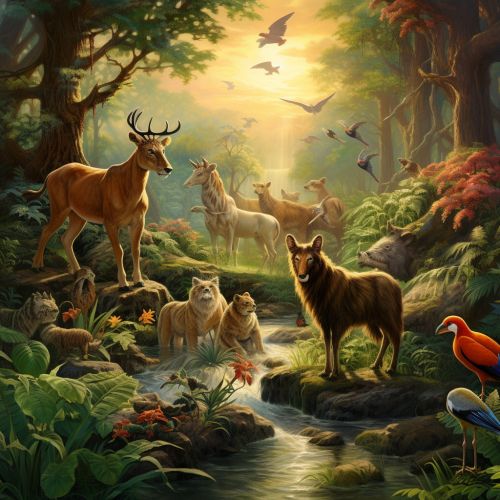Wildlife management
Introduction
Wildlife management refers to the process of keeping wild species populations at levels determined to be safe for both the wildlife and human activities. It involves the application of scientific knowledge and technical skills to protect, preserve, conserve, limit, or enhance wildlife populations and habitats. In essence, wildlife management aims to balance the needs of wildlife with the needs of people using the best available science. Ecology, environmental science, conservation biology, and animal behavior are some of the key disciplines that inform wildlife management practices.
History of Wildlife Management
The concept of wildlife management has its roots in the game laws, which regulated the right to hunt certain species of game. These laws were first established in the medieval period and were primarily aimed at preserving the hunting rights of the nobility. However, the modern concept of wildlife management evolved in the late 19th and early 20th centuries, driven by the conservation movement and a growing scientific understanding of ecosystems and species interactions.
Principles of Wildlife Management
Wildlife management is based on principles derived from ecological and conservation science. These principles guide the management actions and policies, ensuring that they are scientifically sound and ethically responsible.
Carrying Capacity
The concept of carrying capacity is fundamental to wildlife management. It refers to the maximum number of individuals of a species that a particular habitat can support indefinitely. Understanding the carrying capacity of a habitat helps wildlife managers to determine whether a population is at a sustainable level or if intervention is needed.
Habitat Management
Habitat management is a key aspect of wildlife management. It involves the manipulation of the physical environment to enhance the survival and reproduction of certain species. This can involve activities such as controlled burns, reforestation, wetland restoration, and the creation of artificial structures like nest boxes.
Population Management
Population management involves controlling the size and composition of wildlife populations. This can be achieved through various means, including hunting, trapping, contraception, and reintroduction programs.
Techniques and Tools in Wildlife Management
Wildlife management employs a range of techniques and tools, from traditional methods like hunting and trapping to modern technologies like GPS tracking and remote sensing.
Wildlife Surveys
Wildlife surveys are a crucial tool in wildlife management, providing the data needed to assess population sizes, distribution, and trends. These surveys can take many forms, including aerial surveys, camera trapping, and field observations.
Hunting and Trapping
Hunting and trapping are traditional wildlife management tools. They are used to control overabundant species, protect endangered species, and maintain healthy ecosystems.
Remote Sensing and GPS Tracking
Modern technologies like remote sensing and GPS tracking have revolutionized wildlife management, allowing scientists to monitor wildlife populations and their movements in unprecedented detail.
Challenges in Wildlife Management
Wildlife management faces numerous challenges, including habitat loss, climate change, invasive species, and human-wildlife conflict.
Habitat Loss
Habitat loss is one of the biggest threats to wildlife populations worldwide. It is caused by various human activities, including deforestation, urbanization, and agriculture.
Climate Change
Climate change poses a significant challenge to wildlife management. It can alter habitats, disrupt species distributions, and exacerbate other threats like habitat loss and invasive species.
Invasive Species
Invasive species are a major threat to native wildlife. They can outcompete native species for resources, alter habitats, and introduce new diseases.
Human-Wildlife Conflict
Human-wildlife conflict is a significant challenge in wildlife management. It occurs when wildlife activities negatively impact people or their livelihoods, leading to negative responses towards wildlife and conservation efforts.
Future of Wildlife Management
The future of wildlife management will likely involve more integrated and adaptive approaches, incorporating advances in technology and a better understanding of ecological processes. It will also require greater collaboration between different stakeholders, including governments, conservation organizations, indigenous communities, and the public.
See Also


